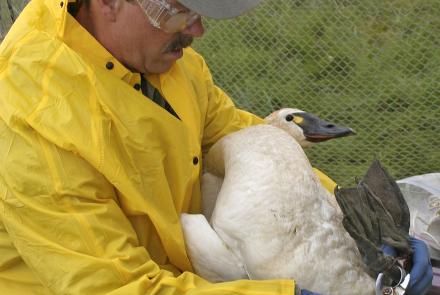Black Rapids Glacier Galloped to Fame in 1937
Though other Alaska glaciers seem to get all the press these days, Black Rapids Glacier in the Alaska Range was a star when Alaska was still a territory.
Black Rapids Glacier crept its way into national news in 1937, when a writer for Time magazine documented the glacier's actions in the article, "Runaway Glacier." Here's an excerpt:
"Out of Central Alaska last week came an exciting story. The Black Rapids Glacier, long dying in its valley 125 miles south of Fairbanks, had come to life. Its mile-and-a-quarter face was shoving toward the Delta River and the Richardson Highway (sole motor road from Fairbanks to the coast), rearing ice crests to 500 feet, breaking off great land icebergs which tumbled thunderously ahead onto the mossy valley floor. Geologist Ernest N. Patty at Fairbanks declared this week that if the Black Rapids Glacier is moving as reported, it is traveling 220 feet per day, a world record."
Though the glacier never advanced past the Delta River to block the Richardson Highway or bump Black Rapids Roadhouse, it was indeed cruising. The glacier advanced about one mile each month between December 3, 1936, and March 7, 1937.
The Black Rapids Roadhouse now slowly decomposes on the roadside, spared the embarrassing fate of being run over by a glacier. That wouldn't have been the case if the proprietors had lived 600 years earlier. By looking at glacial moraine, the rocky spittle left behind by retreating glaciers, scientists determined that Black Rapids Glacier crossed the Delta River valley hundreds of years ago. Back then, the glacier probably acted as a giant beaver, damming the Delta River and creating a lake.
The possibility of another Black Rapids Glacier surge was one of the many natural hazards trans-Alaska pipeline engineers were forced to ponder while routing the pipeline. In fact, some of the research performed on Black Rapids Glacier in the early 1970s was to determine the glacier's threat to the pipeline, wrote Tom Heinrichs of the U.S. Geological Survey and colleagues at UAF in a 1996 article in the Journal of Glaciology. The scientists believe that neither the pipeline nor the highway is in immediate danger of being engulfed by Black Rapids Glacier.
The 27-mile-long glacier is now in what researchers call a "quiescent" phase, a time when glaciers like Black Rapids are retreating and gaining a lot of weight in the form of snow or ice in their upper regions. That bulk may be one of the main forces that will trigger the next rapid advance of Black Rapids Glacier, called a "surge-type glacier" by glaciologists.
What makes a glacier surge? This summer and last, Will Harrison, Keith Echelmeyer, Matt Nolan and Martin Truffer, all of the Geophysical Institute, are using hot-water drills, rock-coring drills and seismic reflectors to get to the bottom of Black Rapids Glacier. There, beneath 2,000 feet of ice, is perhaps the answer to what causes glaciers to all of a sudden get up and go. Studies on other surging glaciers show that the surges are caused by failure of the water drainage system, or "plumbing" within and beneath the ice. As one kindergarten girl asked, "why don't all glaciers surge?" That is indeed the question to which the answer has not been found, and upon which the Black Rapids studies may shed some light.



